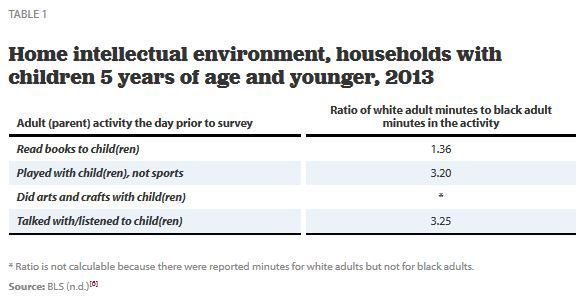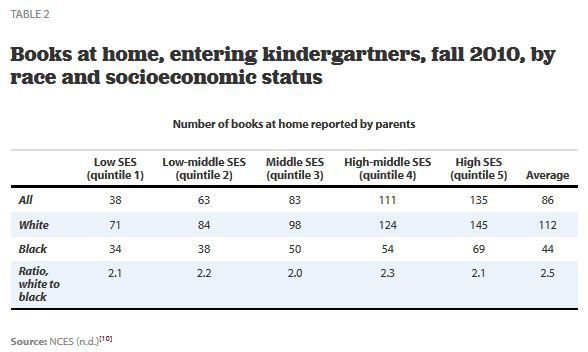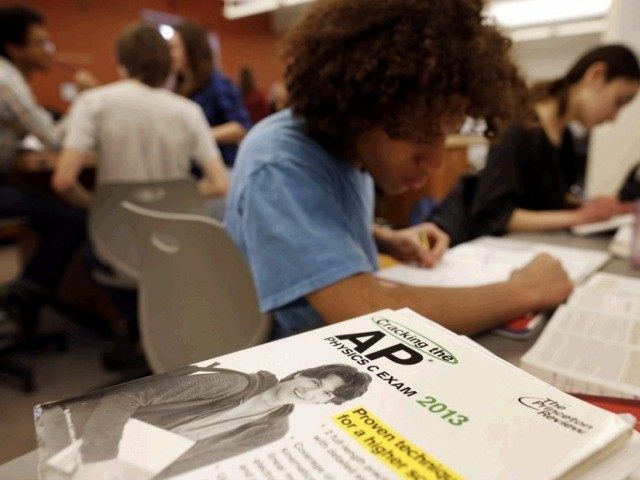Or it could have been grinding poverty, discrimination, and lack of opportunity that leads to a feeling of hopelessness.The disruption of the post-WWII, black entrepreneurial movement and the decimation of the black family via the modern welfare state has been well-documented for decades.
Navigation
Install the app
How to install the app on iOS
Follow along with the video below to see how to install our site as a web app on your home screen.
Note: This feature may not be available in some browsers.
More options
Style variation
You are using an out of date browser. It may not display this or other websites correctly.
You should upgrade or use an alternative browser.
You should upgrade or use an alternative browser.
Which Is The Worse Hate Crime....
- Thread starter PoliticalChic
- Start date
PoliticalChic
Diamond Member
- Thread starter
- #62
"In 1965, Senator Daniel Patrick Moynihan’s report, The Negro Family: The Case for National Action, attributed racial inequality as well as poverty and crime in the black community to family structure, particularly the prevalence of families headed by single mothers. Not only did research at the time cast doubt on this causality, but evidence over the last the 50 years demonstrates that rates of child poverty, educational attainment, and crime do not track rates of single parenthood. Thus, even though the share of children living with a single mother rose for all racial and ethnic groups through the mid-1990s and has remained high since then, school completion and youth arrests for violent crimes have declined significantly, while poverty rates have fluctuated according to economic conditions. Family structure doesHe not drive racial inequity, and racial inequity persists regardless of family structure."
-Amy Traub, Laura Sullivan, Tatjana Meschede and Thomas Shapiro, DEMOS, “The Asset Value of Whiteness: Understanding the Racial Wealth Gap.”
Daniel Patrick Moynihan......smartest Democrat ever to hold office.
He was spot on, and had his perception taken hold, we might all be in a better world today.
Maybe she can explain to you how, if the rate of increase among Whites is several times that of Blacks, Whites will soon have more out of wedlock kids than any other oppressed group.When you say touching are you being sarcastic, and why would her concern be misplaced because of the rising out-of-wedlock births among white women?

PoliticalChic
Diamond Member
- Thread starter
- #64
Or it could have been grinding poverty, discrimination, and lack of opportunity that leads to a feeling of hopelessness.
What lack of opportunity?
Is there some law, regulation, executive order that weighs more heavily on blacks than whites?
No?
You were simply parotting the propaganda?
Lookin' for a gold star, huh?
PoliticalChic
Diamond Member
- Thread starter
- #65
8. “In the U.S., blacks commit the vast share of the interracial violence between blacks and whites that is not classified as a hate crime: 88 percent. Some portion of the gratuitously brutal beatings and carjackings that have become even more of a routine occurrence in the aftermath of the 2020 George Floyd race riots undoubtedly have racial animus behind them.
The authorities treat black-on-white crime as unremarkable, however, and rarely look into motive. Authorities almost always scrutinize white-on-black crime, rare as it is, for a hate enhancement, precisely because it is so rare.”

 www.city-journal.org
www.city-journal.org

Busting Biden's Buffalo Bluster
The authorities treat black-on-white crime as unremarkable, however, and rarely look into motive. Authorities almost always scrutinize white-on-black crime, rare as it is, for a hate enhancement, precisely because it is so rare.”

Using Tragedy for Racial Propaganda
After the shooting, President Biden and others peddle an entirely false charge: that whites are the biggest source of hate crime and interracial violence in the U.S.
 www.city-journal.org
www.city-journal.org
Busting Biden's Buffalo Bluster
- Mar 11, 2015
- 100,645
- 107,265
- 3,645
Moynihan was wrong. He was wrong when he wrote his report.Daniel Patrick Moynihan......smartest Democrat ever to hold office.
He was spot on, and had his perception taken hold, we might all be in a better world today.
- Mar 11, 2015
- 100,645
- 107,265
- 3,645
That chart is fake.8. “In the U.S., blacks commit the vast share of the interracial violence between blacks and whites that is not classified as a hate crime: 88 percent. Some portion of the gratuitously brutal beatings and carjackings that have become even more of a routine occurrence in the aftermath of the 2020 George Floyd race riots undoubtedly have racial animus behind them.
The authorities treat black-on-white crime as unremarkable, however, and rarely look into motive. Authorities almost always scrutinize white-on-black crime, rare as it is, for a hate enhancement, precisely because it is so rare.”

Using Tragedy for Racial Propaganda
After the shooting, President Biden and others peddle an entirely false charge: that whites are the biggest source of hate crime and interracial violence in the U.S.www.city-journal.org
View attachment 649021
Busting Biden's Buffalo Bluster
PoliticalChic
Diamond Member
- Thread starter
- #68
Moynihan was wrong. He was wrong when he wrote his report.
You know the dumbest animal in the jungle? A Polar Bear.
And in many ways….that’s you, in America.
Ringtone
Platinum Member
- Sep 3, 2019
- 6,142
- 3,536
- 940
Sorry, but I don't speak plantation negro.
The Welfare State Did What Slavery Couldn't Do | Mises Institute
Thomas Sowell concluded that “A vastly expanded welfare state in the 1960s destroyed the black family, which had survived centuries of slavery and generations
Ringtone
Platinum Member
- Sep 3, 2019
- 6,142
- 3,536
- 940
Dude, what is your point?Maybe she can explain to you how, if the rate of increase among Whites is several times that of Blacks, Whites will soon have more out of wedlock kids than any other oppressed group.
- Mar 11, 2015
- 100,645
- 107,265
- 3,645
Your opinion means nothing. I posted facts. Moynihan was wrong.You know the dumbest animal in the jungle? A Polar Bear.
And in many ways….that’s you, in America.
No, I just know my history. All of it:What lack of opportunity?
Is there some law, regulation, executive order that weighs more heavily on blacks than whites?
No?
You were simply parotting the propaganda?
Lookin' for a gold star, huh?
On how federal agencies used redlining to segregate African-Americans
The term "redlining" ... comes from the development by the New Deal, by the federal government of maps of every metropolitan area in the country. And those maps were color-coded by first the Home Owners Loan Corp. and then the Federal Housing Administration and then adopted by the Veterans Administration, and these color codes were designed to indicate where it was safe to insure mortgages. And anywhere where African-Americans lived, anywhere where African-Americans lived nearby were colored red to indicate to appraisers that these neighborhoods were too risky to insure mortgages.
PoliticalChic made a big to do over Black single parents, and it is really bad, but seemed to neglect the fact that it is every part of society, not just one.Dude, what is your point?
Ringtone
Platinum Member
- Sep 3, 2019
- 6,142
- 3,536
- 940
You didn't even bother to read the report. If you had, you would know that as early as the 1960s, middle-class black families did not experience the poverty and the feeling of hopelessness that abounds in the black families of entrenched dependency. The key determinate in terms of prospects and outlook is family structure.Or it could have been grinding poverty, discrimination, and lack of opportunity that leads to a feeling of hopelessness.
- Mar 11, 2015
- 100,645
- 107,265
- 3,645
And I don't speak ignorant white boy.Sorry, but I don't speak plantation negro.
The Welfare State Did What Slavery Couldn't Do | Mises Institute
Thomas Sowell concluded that “A vastly expanded welfare state in the 1960s destroyed the black family, which had survived centuries of slavery and generationsmises.org
In 1959 the poverty rate for all American families was 20.8 percent. For white families, it was 16.5 percent. For black families, 54.9 percent. During the time people declare that black families were “intact,” black family poverty was 3.33 times that of white ones. In 1966, the American poverty rate was 13.1 percent. For white families, the poverty rate was 9.7 percent, and for black families, 40.9 percent. In 1966, black family poverty was 4.2 times that of white families. In 1974 the poverty rate for all American families was 9.9 percent. Poverty for Black families was 29.3 percent. For Whites 7.3 percent. Black family poverty was four times that of whites ten years after Civil Rights was passed. In 1984, the poverty rate for all American families was 13.1 percent. For Black families, it was 33.3 percent, Whites 10.1 percent. Black family poverty was 3.29 times that of whites 20 years after Civil Rights was signed into law.
In 2004 the poverty rate for all American families was 11 percent. For white families, it was 9 percent. Black families, 23.8 percent. We are now 40 years past Johnson's signing of the Civil Rights Act. These numbers are well within our lifetimes. In 2004 black family poverty was 2.64 times that of a white family. In 2014, the American poverty rate was 12.7 percent. For white families, the poverty rate was 10.7 percent, and for black families, 24.6 percent. 50 years had passed since the Civil Rights Act, and black families still had at least double the white family poverty rate. In 2014 black family poverty was 2.3 times that of white families. In 2020 the poverty rate for all American families was 9.5 percent. Poverty for black families was 17.4 percent, white families 8.2 percent. Despite increases in educational attainment and breakthroughs at every level of American society, in 2020, black family poverty remained two times that of white families. No matter how it is measured, poverty for whites is lower than the national average, and black poverty is consistently double the national average.
U.S. Census Bureau, Current Population Survey, 1960 to 2021 Annual Social and Economic Supplements (CPS ASEC). Table 2. Poverty Status of People by Family Relationship, Race, and Hispanic Origin: 1959 to 2020, http://www.census.gov/hhes/www/poverty/data/historical/people.html
This is not about lack of education. Nor is it about the field of study.
"Even after completing undergraduate and graduate degrees, black and Hispanic workers earned less than non-Hispanic white workers with the same, or often less, education."
- Roy Eduardo Kokoyachuk, ThinkNow Research
Kokoyachuck found that blacks and Hispanics with college degrees were paid less than whites and Asians with comparable education. His study showed that blacks and Hispanics who graduated in S.T.E.M majors earned less than whites and Asians with degrees in those same majors. "Even when Blacks and Hispanics go the extra mile and earn professional degrees, their incomes still don’t break six figures. Whites and Asians, however, double their incomes by earning professional degrees, allowing them to make well over $100,000 a year."
Last edited:
- Mar 11, 2015
- 100,645
- 107,265
- 3,645
That is incorrect. I have posted the numbers.You didn't even bother to read the report. If you had, you would know that as early as the 1960s, middle-class black families did not experience the poverty and the feeling of hopelessness that abounds in the black families of entrenched dependency. The key determinate in terms of prospects and outlook is family structure.
In 2017, Demos published a study titled, “The Asset Value of Whiteness: Understanding the Racial Wealth Gap.” On page 10 this statement is written:
"The median white single parent has 2.2 times more wealth than the median black two-parent household and 1.9 times more wealth than the median Latino two-parent household.
PoliticalChic
Diamond Member
- Thread starter
- #77
No, I just know my history. All of it:
On how federal agencies used redlining to segregate African-Americans
The term "redlining" ... comes from the development by the New Deal, by the federal government of maps of every metropolitan area in the country. And those maps were color-coded by first the Home Owners Loan Corp. and then the Federal Housing Administration and then adopted by the Veterans Administration, and these color codes were designed to indicate where it was safe to insure mortgages. And anywhere where African-Americans lived, anywhere where African-Americans lived nearby were colored red to indicate to appraisers that these neighborhoods were too risky to insure mortgages.
Redlining was the correct economic plan by banks.
It had nothing to do with race....it had to do with abilitiy to repay loans.
Democrat politicians used it to accrue votes via the lie that it was racist, and produced a huge mortgage meltdown.
Every time, and Biden personifies it: everything the Democrats get their hands on turns to ......mud.
Red-lining is a circle around an area on a map where the analysts feel that the majority will be unable to repay loans.
That is exactly the job of a bank.
If it reflects largely black owned homes, with low incomes and ability to re-pay.....blame their 'friends,' the Democrats.
The Democrat Party works tirelessly to keep black Americans poor and on the government plantation.
It is the fiduciary obligation of a bank to make money for its stockholder.
Red lining is not racism.....it is elementary economics.
Democrats threatened banks if they did not give undeserved loans that would not be paid back, and caused the Mortgage Meltdown.
NINJA loan financial definition of NINJA loan
https://financial-dictionary.thefreedictionary.com › NIN...Acronym for No Income No Job or Assets. Loans made without any supporting documentation for income, employment or assets.
So far your deep ignorance and prejudice is showing.
PoliticalChic
Diamond Member
- Thread starter
- #78
PoliticalChic made a big to do over Black single parents, and it is really bad, but seemed to neglect the fact that it is every part of society, not just one.
Which party is responsible?
It is the party that was (in)famous for popularizing "A woman needs a man like a fish needs a bicycle."
Was that meant to be taken seriously? Sounds like something a woman would say as a joke.Which party is responsible?
It is the party that was (in)famous for popularizing "A woman needs a man like a fish needs a bicycle."
PoliticalChic
Diamond Member
- Thread starter
- #80
That is incorrect. I have posted the numbers.
In 2017, Demos published a study titled, “The Asset Value of Whiteness: Understanding the Racial Wealth Gap.” On page 10 this statement is written:
"The median white single parent has 2.2 times more wealth than the median black two-parent household and 1.9 times more wealth than the median Latino two-parent household.
Let's see if you can figure out why that is related to this:

The report states: “White adults spend 36 percent more time than black adults reading to young children, and three times more time talking with and listening to them. Other analyses find that black mothers are about two-thirds as likely as white mothers to read to toddlers daily.”
Later, the report offers this striking factoid: “By age 6, white children have typically spent 1,300 more hours engaged in conversations with adults than black children.”
EPI’s report endeavors to show that these differences are not simply the result of comparing rich against poor. After noting that the number of books in a home is “a reliable indicator of home intellectual environment,” EPI offers this striking chart:

Overall, white homes had 2.5 times as many books as black homes. But the most surprising finding is that the top quintile of black homes reported having fewer books (69) than the bottom quintile of white homes (71).
These differences in reading to and talking with children begin to add up even before kids get to school...

Report: Negligent Parenting Hurts Black Students' Performance
A newly-published report says that some parenting choices and attitudes can hurt the success of black students in school.www.breitbart.com
Similar threads
- Replies
- 5
- Views
- 72
- Replies
- 165
- Views
- 1K
- Replies
- 13
- Views
- 142
- Replies
- 10
- Views
- 182
New Topics
-
How long before this judge, another trump appointee, is shunned?
- Started by berg80
- Replies: 7
-
Want to keep carbs down? Try a lettuce bun for a hamburger
- Started by shockedcanadian
- Replies: 1
-
-
-
Zone1 Are Your Kids Possessed By Demons Or Just Normal Toddlers? How To Tell The Difference
- Started by Votto
- Replies: 6